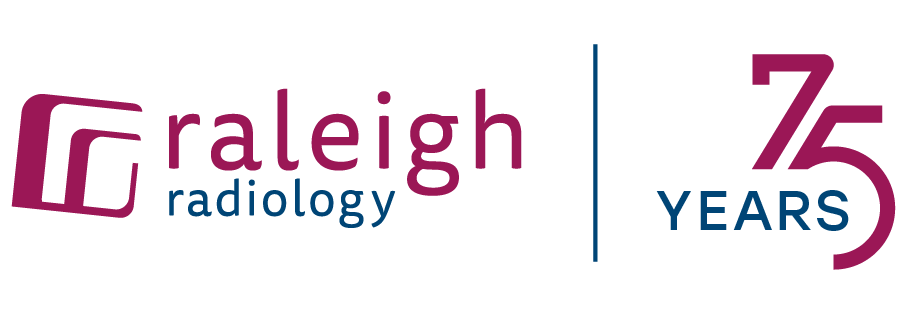Pelvic pain and pressure are common symptoms for women that too often just become part of her daily life. Since there are many possible causes of pelvic pain, pelvic venous insufficiency, also known as pelvic congestion syndrome, can often go undiagnosed or ignored – leaving women stuck with constant feelings of general discomfort, painful pressure in the pelvic area, difficulty standing for long intervals, and a constant feeling of heaviness or fullness in the abdomen or pelvis. She may even suffer from hemorrhoids (swollen veins in the lower rectum) as a result.
“Because there are so many different sources for chronic pelvic pain, many providers shy away from treating it,” explained Dr. Jamie Doster, chair of Interventional and Vascular Radiology at Raleigh Radiology. “It’s a hard condition to diagnose and therefore, patients are often left without answers or options.”
However, Dr. Doster and her interventional radiology colleagues at Raleigh Radiology are committed to helping women who suffer from chronic pelvic pain find long-term relief.
Pelvic Venous Insufficiency as a Cause for Chronic Pelvic Pain
Pelvic congestion syndrome (PCS), medically known as pelvic venous insufficiency, can often be the cause for chronic pelvic pain. PCS is an abnormality in some women where the veins that drain blood from the pelvis are dilated and create blood flow in the wrong direction (away from the heart). This results in increased pressure and swelling in those pelvic veins, much like the varicose veins some women suffer from in the legs.
The only way to know for sure if a patient is suffering from PCS is through an imaging study such as a CT scan. The challenging part is that approximately four out of 10 women who have PCS don’t have any symptoms.
“To accurately diagnose PCS, you have to confirm that both the patient has symptoms and the imaging study must determine the condition is present,” explained Dr. Doster. “Our success in improving a patient’s symptoms is based on our ability to prove both. In other words, treatment will not work if PCS is not the source of the patient’s pain.”
Diagnostic studies offered by interventional radiologists like Dr. Doster greatly increase the chances that treatment will be effective. Often, a patient with pelvic pain will see a radiologist when her gynecologist has been unable to find the reason for her discomfort using other tests or assessments, such as hysteroscopy, a procedure where a gynecologist looks inside the uterus to investigate abnormal bleeding or check for endometriosis.
“Many patients are not even referred to us by their gynecologist,” added Dr. Doster. “They have often done their own research online and feel PCS could be affecting them.”
Ovarian Vein Embolization: A Minimally-Invasive Option to Treat PCS
Treatment options include ovarian vein embolization, a minimally invasive, non-surgical procedure performed in the hospital, where a radiologist uses a catheter to close off the faulty or abnormal veins. Locally, it’s performed at both the WakeMed Raleigh Campus and WakeMed Cary Hospital. This procedure essentially removes the abnormal veins from the circuit of pelvic blood flow, and the blood is then rerouted through the healthy veins. The abnormal veins are coil embolized using image guidance, contrast fluid and a catheter. Through the catheter, an embolic agent is inserted to treat the veins. All of this is performed through a tiny incision in the patient’s neck or groin.
However, before a patient can receive ovarian vein embolization, she must first complete a series of other steps for PCS diagnosis. She will start by meeting with a radiologist for a pre-procedure consultation where her symptoms and quality of life are assessed. From there, an imaging study, such as a CT scan, will help the radiologist examine the anatomy of the patient’s pelvis and pelvic veins.
Finally – prior to the ovarian vein embolization, a pelvic venogram is required. This is where a catheter is inserted into the pelvic veins with a wire, and contrast fluid is used to confirm the diagnosis and help the radiologist get a better look at the veins prior to the embolization procedure. It is a same-day, minimally invasive procedure using a tiny incision in the neck or groin that allows the radiologist to take pressure measurements of the pelvic veins. The venogram and the ovarian vein embolization can be done together or separately, depending on the patient’s preference and/or insurance coverage. This will also be discussed during the pre-procedure consultation.
Recovering from Ovarian Vein Embolization & Enjoying the Results
After an ovarian vein embolization, a patient is typically discharged on the same day. Patients may experience mild discomfort, nausea, low-grade fever and/or cramping in the days after the procedure, which can typically be treated with ibuprofen. According to Dr. Doster, about 80 percent of patients can experience significant improvement in pelvic pain after undergoing an ovarian vein embolization.
“It’s remarkable that we can treat our PCS patients with an option that doesn’t require surgery. They can potentially be home recovering on the same day and then experience long-term benefits and symptom relief from this innovative non-surgical procedure,” added Dr. Doster. “It’s so rewarding to know we can help women suffering from pelvic congestion truly improve their quality of life.”
To learn more about Dr. Doster and Raleigh Radiology, visit www.raleighrad.com.
Source:
RadiologyInfo.org: www.radiologyinfo.org
